If you’re looking for a unique and meaningful tattoo design, the scythe symbol might be an option to consider. The scythe has been used as a symbol of death and mortality for centuries, and it has also been associated with farming and harvest. In this article with Impeccable Nest, we’ll explore the scythe tattoo meaning, symbolism, and designs to help you decide if this is the right tattoo for you.
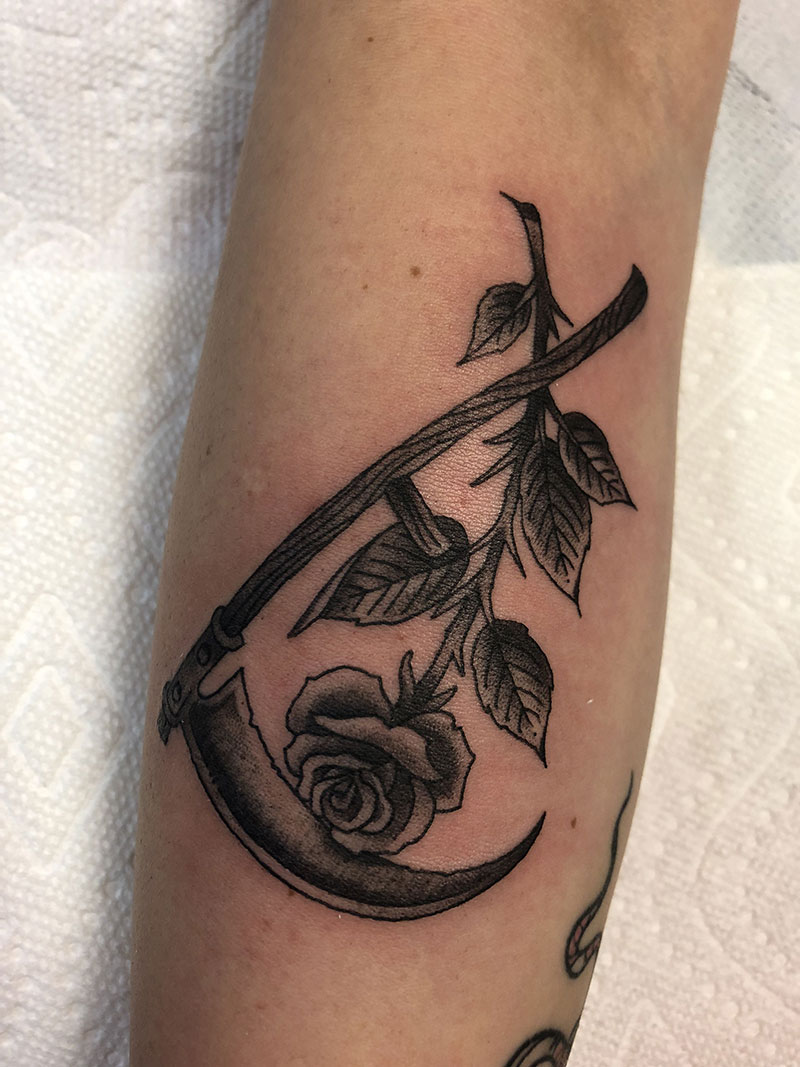
Scythe Tattoo Meaning: Unveiling the Enigmatic Symbol
The scythe tattoo can have different meanings depending on the individual’s interpretation and cultural background. Here are some of the most common meanings associated with the scythe tattoo:
Death and Mortality
A scythe tattoo holds significant meaning for those who choose to get it inked on their body. The scythe is a tool used for harvesting crops, but it also symbolizes the inevitability of death. Therefore, for some people, getting a scythe tattoo can serve as a reminder that life is fleeting and impermanent.
In addition, a scythe tattoo can be a way for individuals to honor the memory of a loved one who has passed away. It can serve as a permanent reminder of their loved one’s life and legacy, helping them to keep their memory alive.
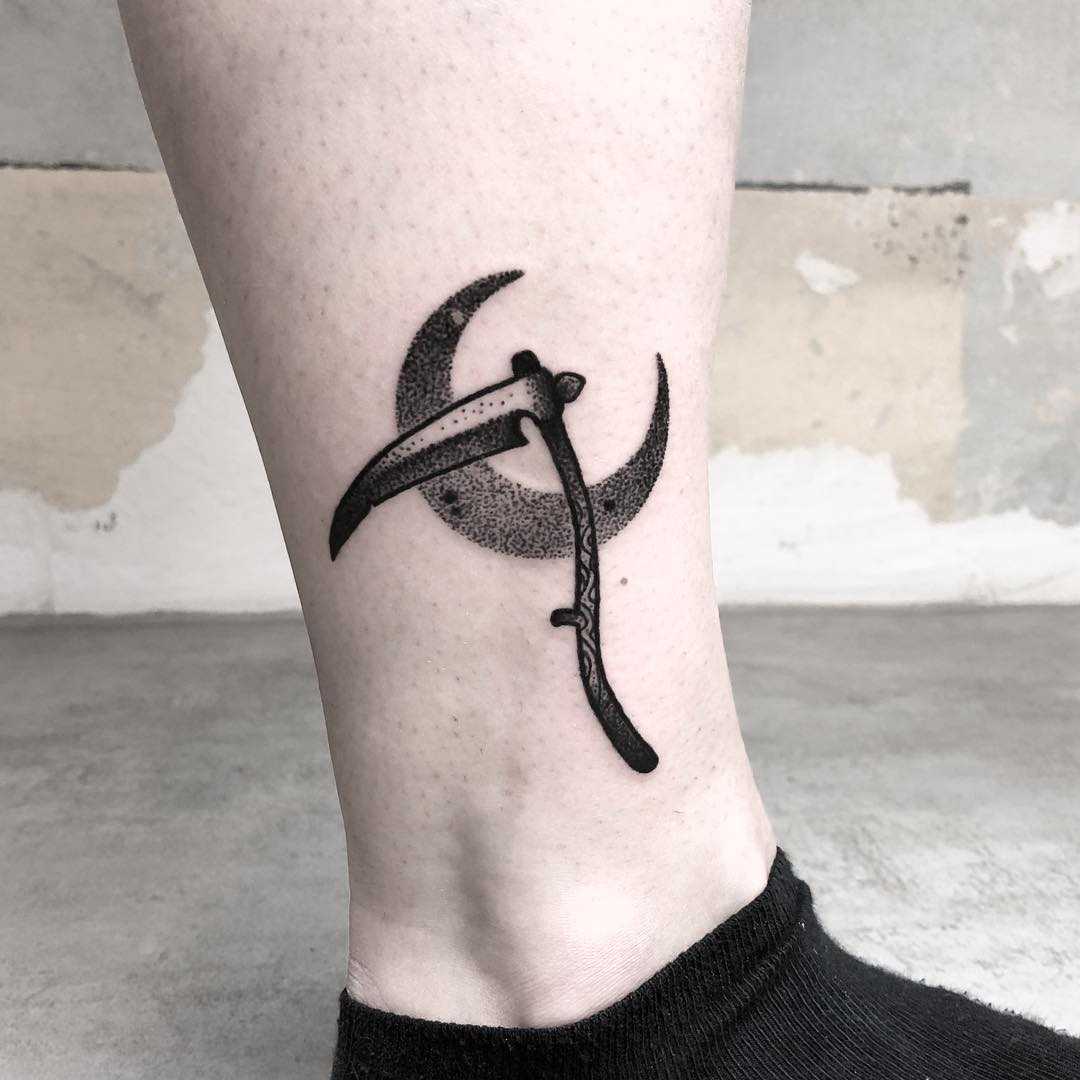
The placement and design of the scythe tattoo can also hold additional meanings. For example, if the scythe is depicted with a skull or in a grim reaper-like fashion, it may represent the darker aspects of life and death. However, if the scythe is accompanied by flowers or other symbols of growth and renewal, it can symbolize the cycle of life and death.
It is important to note that while a scythe tattoo can hold deep personal meaning for the individual who chooses to get it, it can also be interpreted differently by others. Some may see it as a morbid or ominous symbol, while others may see it as a representation of acceptance and understanding of the natural cycles of life.
Harvest and Farming
A scythe tattoo is a popular design that holds deep meanings and symbolism. Typically, a scythe tattoo depicts an image of the tool used for harvesting crops or cutting grass. The scythe has been widely used by farmers and gardeners to clear large areas of vegetation, making it an excellent representation of hard work and perseverance.
One of the main interpretations of a scythe tattoo is its connection to nature. The scythe itself is a tool that is used to harvest crops, which are products of Mother Nature. The tattoo can serve as a reminder of our connection to the earth and the importance of respecting and preserving the environment. It can be a symbol of appreciation for the beauty and abundance that nature provides us with.
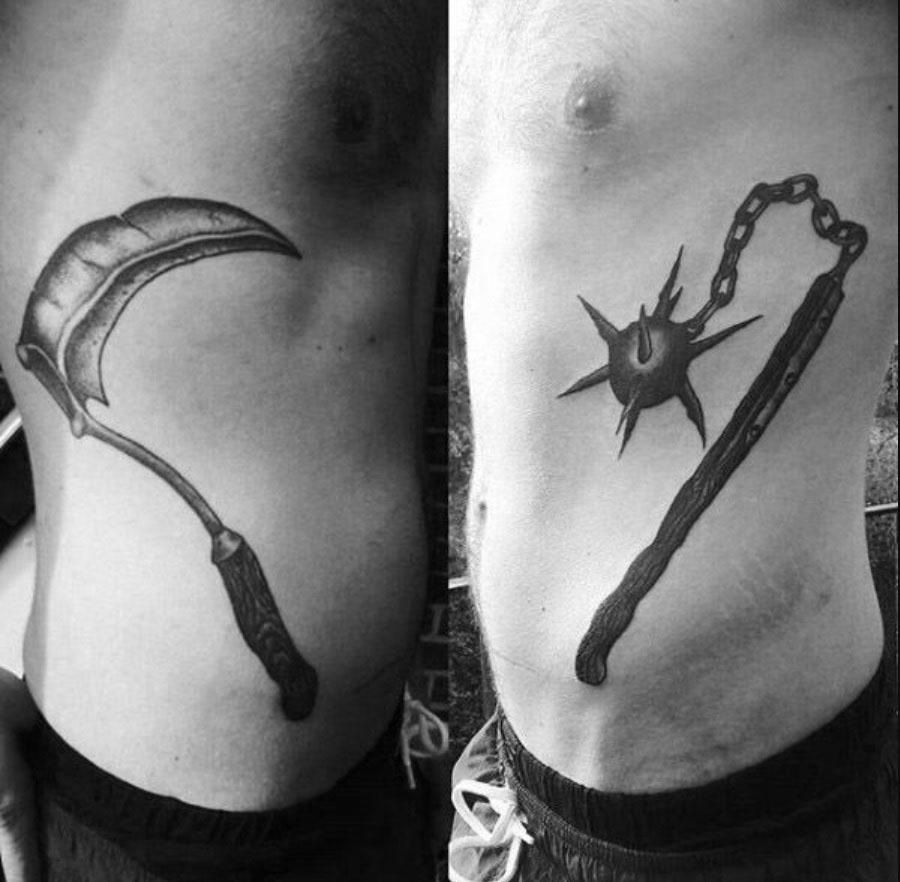
Another significant meaning of the scythe tattoo is the cycle of life and death. The scythe is often associated with the Grim Reaper, who is known to wield this tool to cut souls from their physical bodies. Therefore, a scythe tattoo can represent the inevitability of death and the transience of life. It can be a reminder to live in the present moment and make the most of the time we have on this earth.
Moreover, a scythe tattoo can also signify hard work and dedication. The tool itself requires physical strength and expertise to use effectively. Farmers and gardeners rely on the scythe to harvest their crops and ensure their livelihoods. Thus, a scythe tattoo can represent the value of hard work and the satisfaction that comes with achieving one’s goals through perseverance.
Grim Reaper
A scythe tattoo with the Grim Reaper is a common and popular motif in the world of body art. The Grim Reaper, also known as Death, is often depicted carrying a scythe, which has become a symbol of the inevitability of death.
For some individuals, a scythe tattoo with the Grim Reaper can represent a fascination with death. This fascination may stem from a desire to explore the mysteries of life and death, or it may be an expression of a person’s interest in gothic or macabre themes. It is not uncommon for people who are drawn to this type of tattoo to have a deep-seated curiosity about what happens after we die and how our mortality shapes our lives.
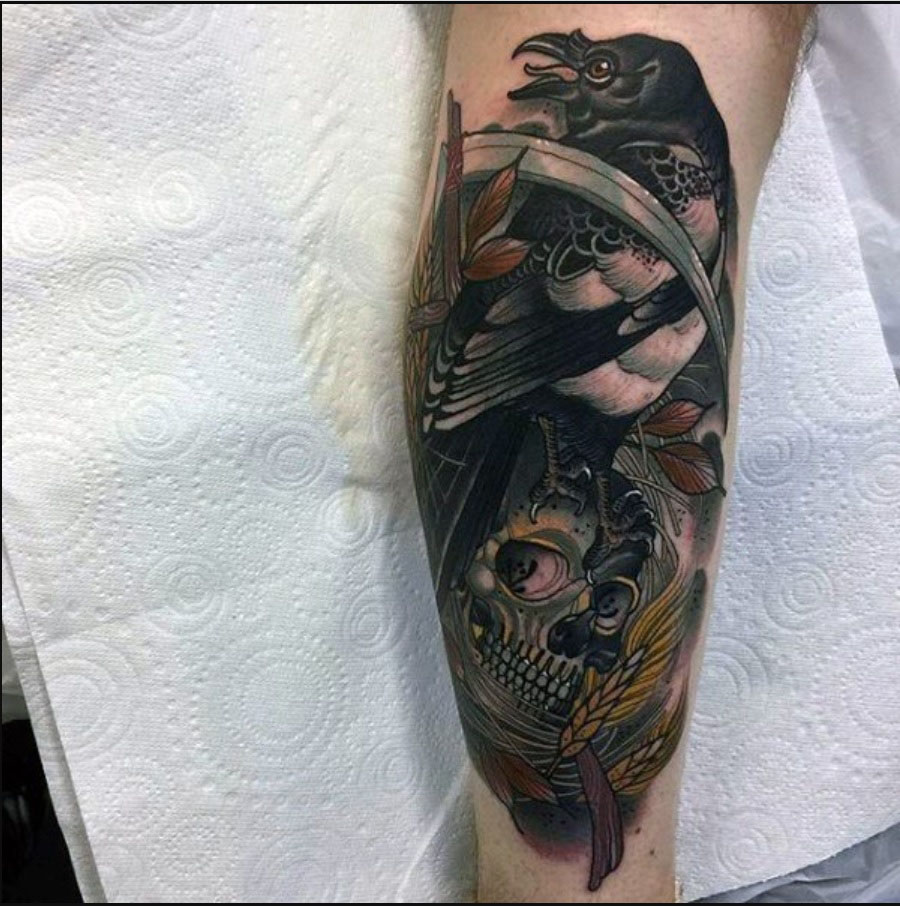
On the other hand, a scythe tattoo with the Grim Reaper can also represent a desire to embrace the darker aspects of life. Some individuals find comfort in the idea that death is an inevitable part of life, and they choose to confront this reality head-on by embracing symbols associated with death. For these people, a scythe tattoo with the Grim Reaper may serve as a powerful reminder of the fragility of life and the importance of living each day to the fullest.
It’s important to note that while a scythe tattoo with the Grim Reaper may seem ominous or foreboding to some, it does not necessarily mean that the person who wears it is morbid or depressed. Many people who choose to get this type of tattoo do so simply because they appreciate the symbolism behind it or because they find it aesthetically pleasing.
Strength and Power
The scythe tattoo typically carries a symbolic meaning of perseverance and hard work. The image of a scythe is often associated with farming and agriculture, as it is an essential tool used for harvesting crops. Farmers rely on their scythes to cut down tall grasses and other plants that have grown over the course of the year, in order to make way for new growth and ensure a successful harvest.
In this sense, the scythe tattoo can be seen as a representation of the hard work and dedication required to achieve success in life. Just as a farmer must work tirelessly to bring in the harvest, individuals who choose to ink themselves with a scythe are often looking to remind themselves of the importance of persevering through obstacles and challenges.
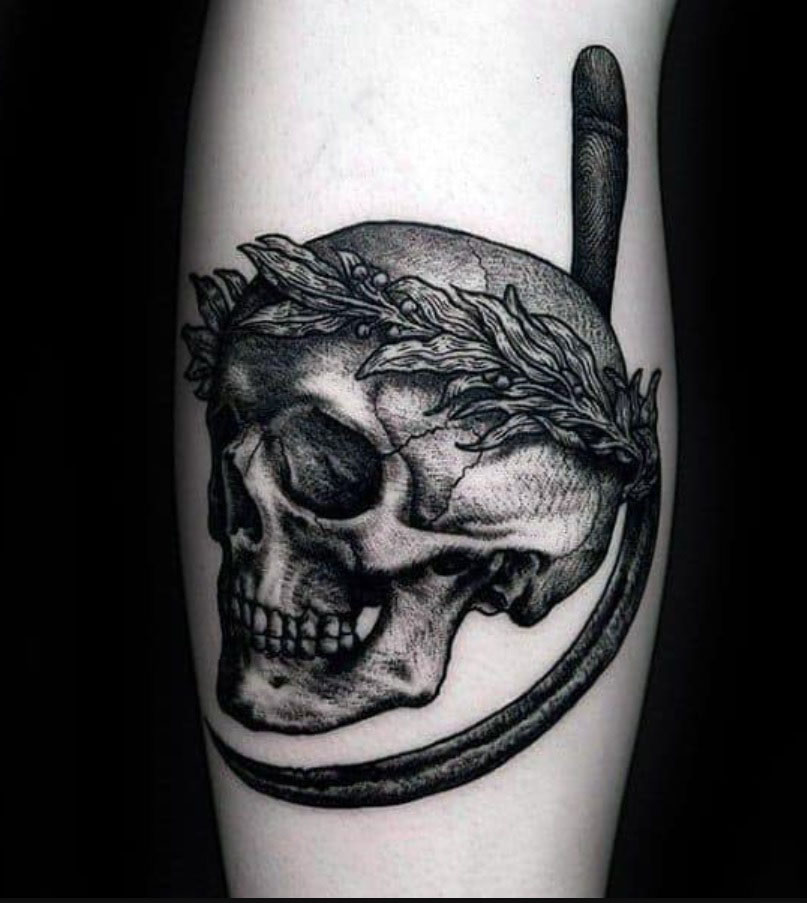
Furthermore, the scythe is also associated with death and the passage of time. In many cultures, the image of a scythe-wielding figure is used to represent the Grim Reaper, a personification of death itself. This connection to mortality adds another layer of symbolism to the scythe tattoo, suggesting that its wearers are acutely aware of the fleeting nature of life and the need to make the most of every moment.
Scythe Symbol Meaning: Unveiling the Spiritual Significance
The scythe symbol has been used across many cultures throughout history. Here are some of the most common meanings associated with the scythe symbol:
Death and Mortality
The scythe is a long, curved blade attached to a pole or handle and used for cutting grass or harvesting crops. However, it has also become an iconic symbol associated with death and the afterlife. The scythe’s association with death can be traced back to ancient mythology and folklore, where it was often depicted in the hands of gods and goddesses of the underworld, such as Hades, Pluto, and Persephone.
In popular culture, the scythe is most commonly associated with the Grim Reaper, a personification of death itself. The Grim Reaper is often depicted wearing a black cloak and hood, carrying a scythe over his shoulder. This image has become deeply ingrained in our collective consciousness as a symbol of mortality and the end of life.
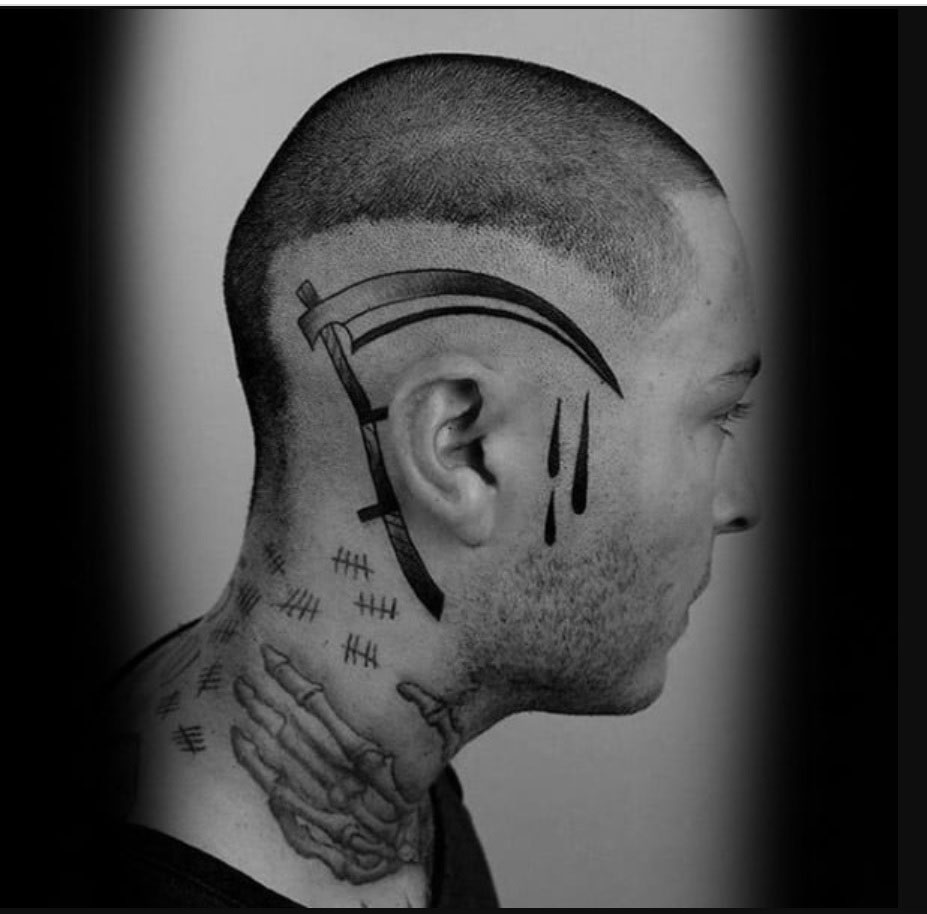
The use of the scythe as a symbol of death is rooted in its function as a harvesting tool. Just as the scythe is used to cut down crops at their peak of maturity, so too does death come to us when we have reached the end of our natural lifespan. The scythe thus represents the inevitability of death and the transience of human existence.
The symbolic power of the scythe has been harnessed by artists, writers, and filmmakers throughout history. In literature, the scythe has been used to evoke the specter of death, as in John Milton’s epic poem “Paradise Lost,” where Death is depicted as wielding a huge scythe. In film and television, the Grim Reaper is a common character, appearing in everything from horror movies to comedies.
Despite its association with death, the scythe can also represent renewal and rebirth. In agricultural societies, the harvest season marks the end of one cycle of growth and the beginning of another. The scythe can thus be seen as a tool of transformation, cutting down the old to make way for the new.
Harvest and Fertility
In many pagan traditions, the scythe has been a symbol of harvest and fertility, with its sharp blade representing male energy and the curved handle representing the feminine aspect of nature. The phallic symbolism of the blade is commonly associated with ideas of virility and potency, while the curved handle is sometimes interpreted as a representation of motherhood and nurturing.
Throughout history, farmers have used the scythe to cut down crops and bring in the harvest. This practical use of the scythe gave it great significance in agricultural communities, and it became an important tool in the celebration of life cycles and seasonal changes. In many Pagan cultures, the scythe was viewed as a sacred object that represented the power of life and death.

The scythe’s association with fertility is partly due to its connection to the harvest. The ability to bring in a bountiful harvest was seen as a manifestation of fertility, and the scythe was often used in rituals to honour the earth and its generous bounty. The scythe was also used in ceremonies that marked the changing of the seasons, such as the summer and winter solstices and the spring and autumn equinoxes.
In addition to its symbolic associations with fertility and harvest, the scythe has also been linked to the idea of death and rebirth. As a tool used to cut down crops and plants, the scythe represents the end of one cycle of life and the beginning of another. This symbolism is particularly significant in Pagan rituals that mark the passage of time and the cyclical nature of existence.
Time and Reaping
The scythe has been a prominent symbol in many cultures throughout history, often used to represent time and the concept of reaping what one sows. The image of Father Time holding a scythe is perhaps the most well-known representation of this symbolism, as it represents both the passage of time and the inevitability of death.
In many cultures, including ancient Greece and Rome, the scythe was associated with the harvest season and the cutting down of crops. This association with the harvest led to the use of the scythe as a symbol for reaping what one sows – that is, the idea that one’s actions will inevitably lead to corresponding consequences or rewards. In this context, the scythe can be seen as a reminder that we must be mindful of our actions and their potential outcomes.
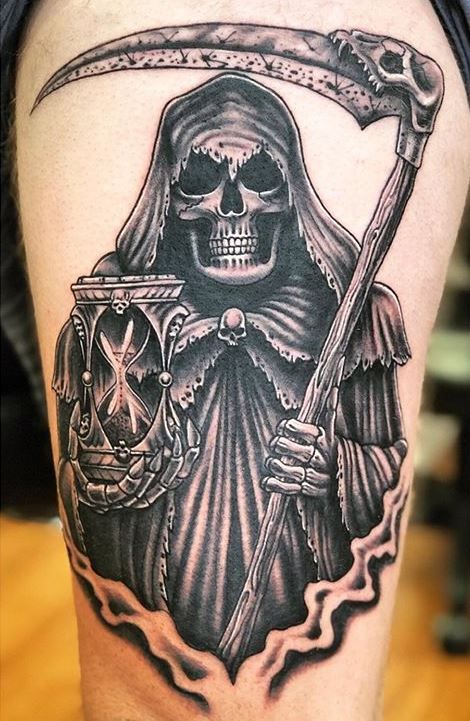
Over time, the scythe took on additional meanings and associations. In medieval Europe, the scythe was often depicted as a tool used by the Grim Reaper, a personification of death. This association with death and mortality further reinforced the scythe’s symbolic connection to the passage of time and the inevitability of our own eventual demise.
The image of Father Time holding a scythe is perhaps the most iconic representation of this symbolism. Often depicted as an old man with a long beard, robes, and a scythe, Father Time is a personification of time itself. The scythe he holds serves as a constant reminder that time marches forward relentlessly, cutting down everything in its path – much like a farmer harvesting his crops.
Meaning of Different Scythe Tattoo Designs and Interpretations
Scythe tattoos can be designed in many different ways, depending on the individual’s preference and style. Here are some popular scythe tattoo designs:
Grim Reaper with Scythe
One of the most iconic scythe tattoo designs is the Grim Reaper holding a scythe. This design can be done in various styles, from realistic to cartoonish, and can include additional elements such as skulls or flames.
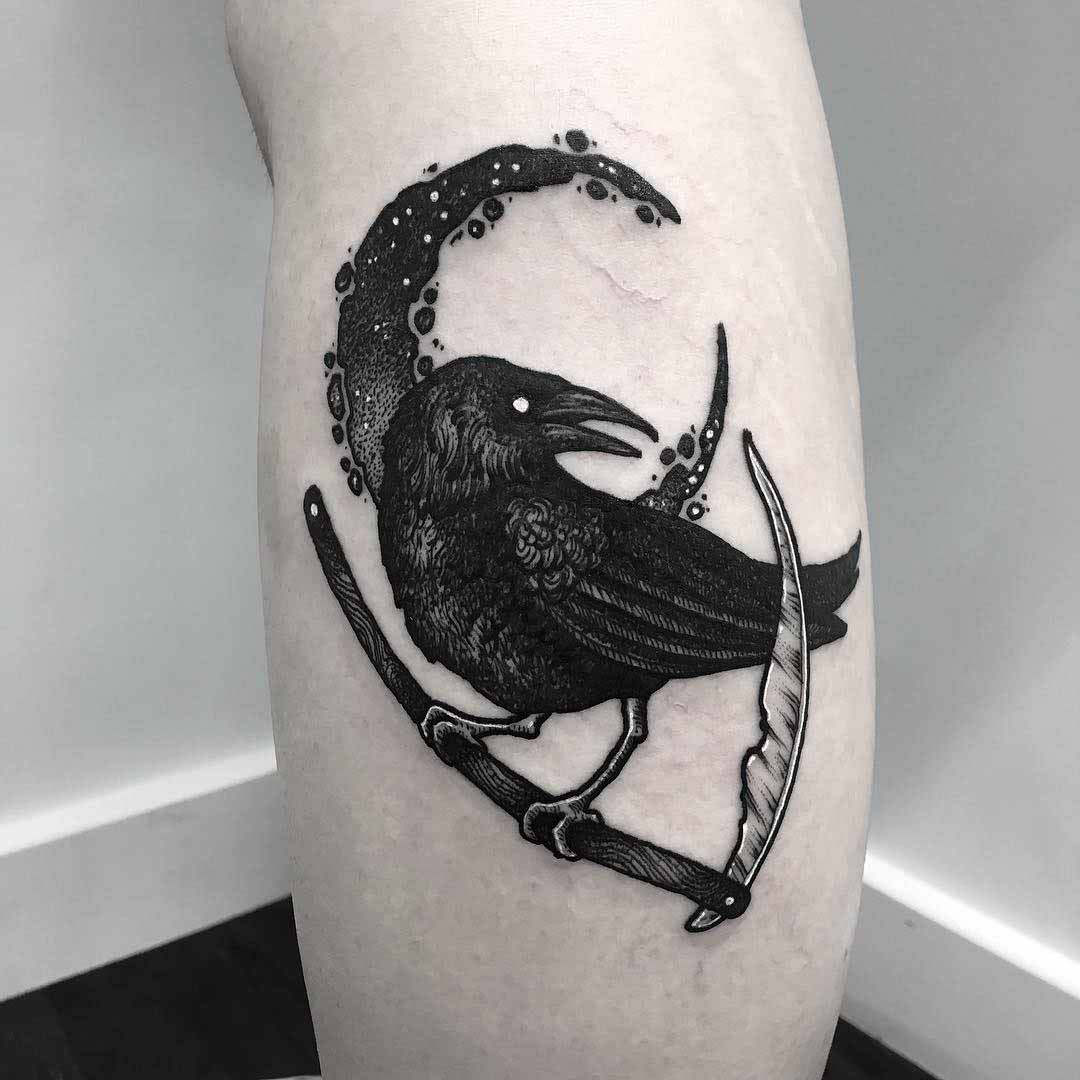
Scythe with Harvest Elements
For those who want to emphasize the connection between the scythe and harvest, a design that includes grains, fruits, or vegetables can be a good option. The scythe can be combined with a basket of apples or a sheaf of wheat to create a more complex design.
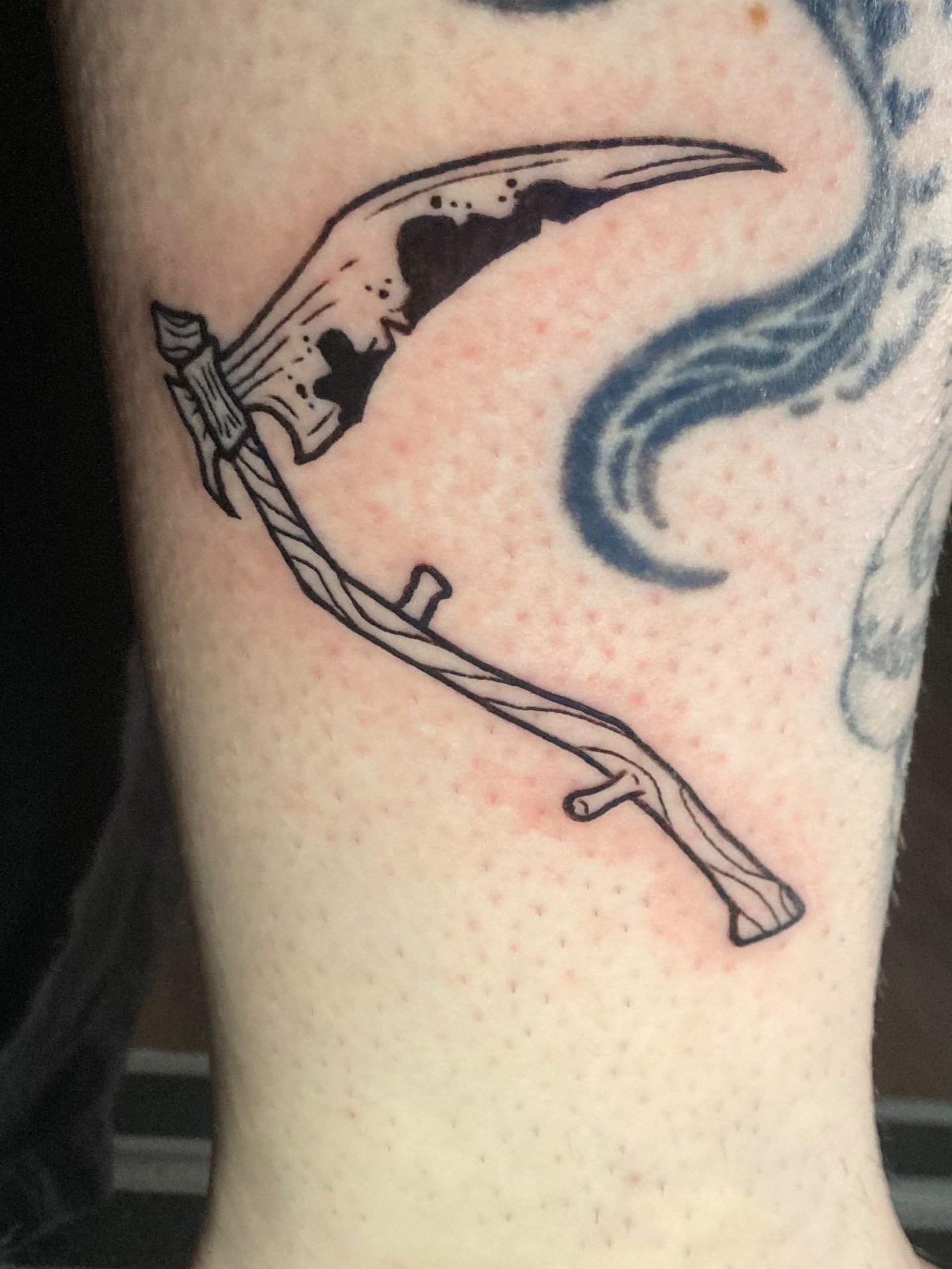
Scythe with Clock or Hourglass
To represent the passage of time and the inevitability of death, a scythe tattoo can be combined with a clock or hourglass. This design can be done in a realistic or abstract style.

Scythe with Flowers or Butterflies
For those who want to soften the dark symbolism of the scythe, a design that includes flowers or butterflies can add a touch of beauty and femininity. The scythe can be combined with roses, daisies, or other floral motifs.

Minimalist Scythe
For those who prefer a more understated tattoo design, a minimalist scythe tattoo can be a good option. A simple line drawing of a scythe can be placed on the wrist, ankle, or behind the ear for a subtle yet meaningful tattoo.

Conclusion: A Unique Expression
The scythe tattoo can be a meaningful and unique design for those interested in themes of death, mortality, and harvest. Whether you choose to include additional elements such as the Grim Reaper, flowers, or clocks, or opt for a minimalist design, a scythe tattoo can represent a connection to nature and the cycles of life and death. As with any tattoo, it’s important to research the design, placement, and artist before making a commitment.

I am Harvey Berry, a tattoo enthusiast who has immersed himself in the diverse world of ink, passionately exploring the beauty and artistry within each tattoo. My mission extends beyond uncovering the aesthetics of tattooing; it involves sharing in-depth knowledge across all aspects of this art form.
Fueled by genuine curiosity and love for every facet of tattooing, I have diligently crafted well-researched articles, with a special focus on the Tattoo Meaning of Impeccable Nest section. Here, my aim is to help the tattoo community gain a deeper understanding of the meanings and values embedded in each tattoo.
One of my primary goals is to encourage responsible decision-making when it comes to getting inked. I recognize that choosing to get a tattoo is a significant personal decision that requires careful consideration. Hence, I provide diverse resources covering the meaning of tattoos, the tattooing process, aftercare tips, and other valuable information.
Whether you are a seasoned tattoo enthusiast or embarking on your first exploration of the world of body art, I aspire to be a reliable resource for you at every step of your journey. I hope that my extensive knowledge of tattoos, especially in the Tattoo Meaning section, will assist you in finding inspiration to express yourself through the art of tattoos.
